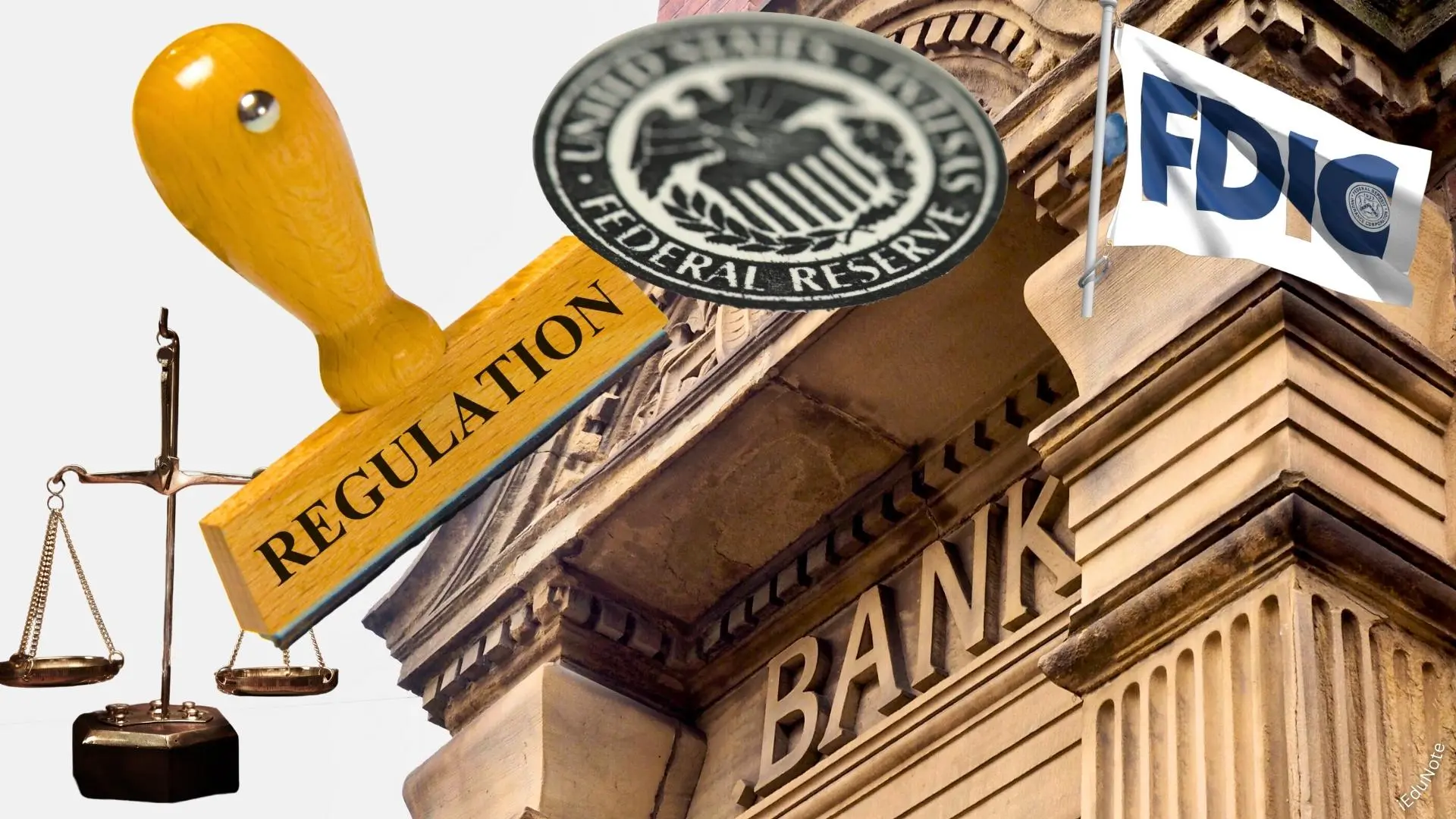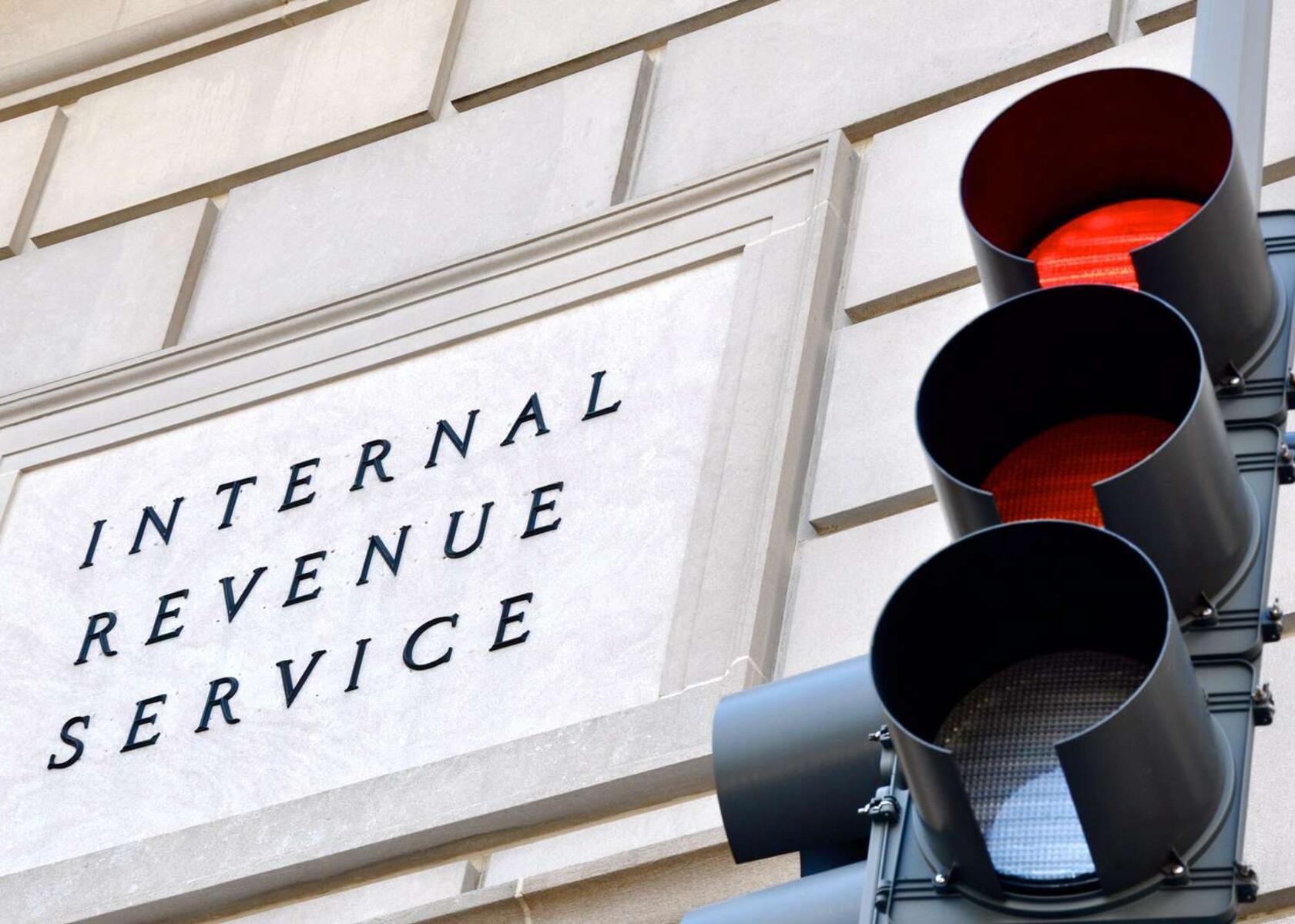Introduction
Welcome to the world of banking, where financial institutions are governed by a multitude of regulations and acronyms. One such acronym that you may have come across is “BSA.” But what does BSA stand for in banking? BSA stands for the Bank Secrecy Act, a crucial piece of legislation that plays a vital role in combatting financial crimes, such as money laundering and terrorism financing.
The Bank Secrecy Act was enacted in 1970 as a response to growing concerns about illicit financial activities and the need to maintain the integrity of the banking system. BSA’s primary objective is to deter and detect money laundering by requiring financial institutions to establish robust anti-money laundering (AML) programs and reporting mechanisms. By doing so, BSA reinforces the government’s efforts to protect the US financial system from abuse.
BSA applies to a wide range of financial institutions, including banks, credit unions, money services businesses, securities dealers, and casinos. Regardless of their size, these institutions must comply with the BSA’s regulatory requirements, which encompass various reporting, record-keeping, and compliance obligations.
Failure to comply with BSA guidelines can result in severe penalties, reputational damage, and legal repercussions. Therefore, it is crucial for banks and other financial institutions to have a comprehensive understanding of BSA’s provisions and implement robust compliance programs.
In this article, we will explore the purpose of BSA in banking, the specific requirements it imposes on financial institutions, the importance of BSA compliance, and the consequences of non-compliance. By delving into these aspects, we aim to provide you with a deeper understanding of the significance of BSA in the banking industry and its role in safeguarding the integrity of the financial system.
What is BSA?
The Bank Secrecy Act (BSA) is a crucial piece of legislation in the United States that was enacted in 1970. It was introduced with the aim of combating financial crimes, such as money laundering, terrorist financing, and other illicit activities. BSA is also commonly referred to as the Anti-Money Laundering (AML) law.
BSA requires financial institutions to establish and maintain robust AML programs to detect and prevent money laundering and other financial crimes. These financial institutions include banks, credit unions, money services businesses, casinos, and securities dealers. The BSA regulations apply to both large, well-established banks and smaller community banks, ensuring that all financial institutions play a role in protecting the integrity of the financial system.
The primary objective of BSA is to enhance transparency and accountability in the banking sector. It does this by requiring financial institutions to keep accurate records of customer transactions and report suspicious activities to the appropriate authorities. By reporting suspicious transactions, financial institutions contribute to the early detection and prevention of illicit activities.
BSA also provides the framework for cooperation and information sharing among financial institutions, regulatory agencies, and law enforcement agencies. This collaboration is crucial in identifying and investigating potential cases of money laundering, terrorism financing, and other financial crimes.
Moreover, BSA empowers regulatory agencies, such as the Financial Crimes Enforcement Network (FinCEN) and the Office of the Comptroller of the Currency (OCC), to enforce compliance by conducting regular audits and examinations of financial institutions. These examinations ensure that financial institutions are implementing effective AML programs and fulfilling their reporting obligations.
Overall, BSA serves as a crucial tool in the fight against financial crimes. It establishes a strong regulatory framework that requires financial institutions to take proactive measures to prevent and detect money laundering, terrorist financing, and other illicit activities. By doing so, BSA plays a vital role in safeguarding the integrity of the U.S. financial system and protecting it from abuse.
Purpose of BSA in Banking
The Bank Secrecy Act (BSA) serves several important purposes in the banking industry. Its primary objective is to combat money laundering, terrorist financing, and other financial crimes. By imposing specific requirements on financial institutions, BSA aims to achieve the following goals:
1. Detection and Prevention of Money Laundering: Money laundering is the process of disguising the origins of illegally obtained funds to make them appear legitimate. BSA requires financial institutions to establish robust anti-money laundering (AML) programs that include customer due diligence, ongoing monitoring, and the reporting of suspicious activities. By adhering to these requirements, banks can help identify and halt money laundering attempts.
2. Safeguarding the Integrity of the Financial System: BSA’s regulations enhance the transparency and accountability of the banking sector. By maintaining accurate records of customer transactions and implementing AML programs, financial institutions contribute to the early detection and prevention of financial crimes. This helps protect the integrity of the financial system and ensures that banks are not unwittingly used to facilitate illegal activities.
3. Combating Terrorism Financing: BSA also plays a crucial role in the fight against terrorism financing. By monitoring customer transactions and suspicious activities, financial institutions can detect patterns or transactions linked to terrorist organizations. Prompt reporting of such activities helps law enforcement agencies track and disrupt the flow of funds to terrorist groups, ultimately contributing to national security efforts.
4. Promoting Collaboration and Information Sharing: BSA fosters cooperation among financial institutions, regulatory agencies, and law enforcement entities. This collaboration ensures the sharing of information about suspicious activities, money laundering methods, and emerging trends. By working together, these stakeholders can effectively combat financial crimes, enhance investigations, and develop strategies to stay ahead of criminals.
5. Enhancing Compliance and Accountability: BSA requires financial institutions to implement comprehensive AML programs and conduct periodic reviews to ensure compliance. This helps maintain an environment of accountability and ensures that banks are actively working to prevent financial crimes. Regulatory agencies conduct regular examinations of financial institutions to assess their compliance with BSA regulations, further reinforcing the importance of adherence to these requirements.
Overall, the purpose of BSA in banking is to create a robust framework that mitigates the risks associated with money laundering and terrorist financing. By imposing specific obligations on financial institutions, BSA aims to protect the integrity of the financial system, safeguard national security, and preserve public confidence in the banking industry.
BSA Requirements for Banks
The Bank Secrecy Act (BSA) imposes specific requirements on banks to ensure compliance with its anti-money laundering (AML) provisions. These requirements are essential for banks to play their crucial role in detecting and preventing financial crimes. Here are some of the key BSA requirements for banks:
1. Customer Identification Program (CIP): Banks are required to have a CIP in place to verify the identity of their customers. This includes obtaining key information, such as name, date of birth, address, and identification number. The CIP helps banks establish a customer’s true identity and minimize the risk of fraudulent activity.
2. Reporting Suspicious Activities: Banks are obligated to monitor customer transactions and report any suspicious activities to the Financial Crimes Enforcement Network (FinCEN). Suspicious activities can include large cash deposits, frequent structuring of transactions, or transactions involving high-risk jurisdictions. Prompt reporting helps law enforcement agencies investigate potential money laundering or terrorism financing.
3. Currency Transaction Reports (CTRs): Banks are required to file CTRs for transactions involving currency exceeding a specified threshold (currently $10,000). CTRs provide valuable information to law enforcement agencies by documenting significant cash transactions and aiding in the identification of money laundering or other illicit activities.
4. Record Keeping: Banks must keep records of customer transactions and other relevant documents for a specified period. This includes account opening records, transaction records, and other supporting documentation. These records ensure transparency and serve as evidence in case of investigations or audits.
5. Suspicious Activity Monitoring and Filings: Banks must establish robust systems to monitor customer transactions for potential suspicious activities. If suspicious activities are detected, banks must file Suspicious Activity Reports (SARs) with FinCEN. SARs provide detailed information about the suspicious activity, enabling law enforcement agencies to investigate and take appropriate action.
6. Ongoing AML Training: Banks are expected to provide regular AML training to their employees to ensure awareness and understanding of money laundering risks and detection mechanisms. Ongoing training helps employees identify suspicious activities and comply with BSA requirements.
7. Risk Assessment and Internal Controls: Banks are required to conduct periodic risk assessments to identify their money laundering and terrorism financing risks. Based on the risk assessment, banks must implement internal controls, policies, and procedures to mitigate these risks effectively.
Meeting these BSA requirements is essential for banks to maintain compliance, protect the integrity of the financial system, and contribute to the collective efforts in combating financial crimes. Failure to adhere to these requirements can lead to severe penalties, reputational damage, and legal consequences.
Importance of BSA Compliance
Compliance with the Bank Secrecy Act (BSA) is of utmost importance for banks and financial institutions. BSA compliance plays a significant role in safeguarding the integrity of the financial system and protecting institutions from the risks associated with money laundering, terrorist financing, and other financial crimes. Here are some key reasons highlighting the importance of BSA compliance:
1. Protecting Financial Institutions: BSA compliance helps protect financial institutions from being unwittingly involved in illegal activities. By implementing robust anti-money laundering (AML) programs and adhering to BSA regulations, banks can identify and prevent money laundering attempts. This protection is crucial for maintaining the integrity of the institution, preserving customer trust, and avoiding reputational damage.
2. Enhancing National Security: BSA compliance contributes to national security efforts by combating terrorism financing. By closely monitoring customer transactions and promptly reporting suspicious activities, banks can aid law enforcement agencies in identifying and disrupting the flow of funds to terrorist organizations. This proactive approach is essential in preventing threats to national security.
3. Promoting Transparency and Accountability: BSA compliance fosters transparency and accountability within the banking industry. Financial institutions are required to keep accurate records of customer transactions, report suspicious activities, and maintain comprehensive AML programs. This level of transparency helps regulators and law enforcement agencies in identifying potential risks and investigating instances of financial crimes, ultimately contributing to overall financial stability.
4. Mitigating Financial Risks: Non-compliance with BSA regulations exposes financial institutions to significant risks, including financial loss, legal penalties, and damage to their reputation. By maintaining BSA compliance, banks mitigate these risks. A well-implemented AML program provides mechanisms to detect and prevent money laundering, reducing the likelihood of financial losses and legal consequences.
5. Collaboration and Information Sharing: BSA compliance encourages collaboration and information sharing among financial institutions, regulatory agencies, and law enforcement entities. This collaboration enables the exchange of critical insights and trends related to money laundering and other financial crimes. By working together, stakeholders can identify new patterns, develop preventive measures, and enhance the effectiveness of their anti-money laundering efforts.
6. Legal and Regulatory Compliance: Compliance with BSA is a legal requirement for financial institutions. Failing to meet BSA obligations can result in severe penalties, audits, fines, regulatory scrutiny, and even criminal charges. By adhering to BSA regulations, banks ensure legal and regulatory compliance, protecting themselves from the consequences of non-compliance.
In summary, BSA compliance is essential for financial institutions to protect themselves, uphold national security, promote transparency, mitigate financial risks, foster collaboration, and meet legal and regulatory requirements. By maintaining BSA compliance, banks contribute to the overall stability and integrity of the financial system.
BSA Compliance Program Elements
A robust and effective Bank Secrecy Act (BSA) compliance program is crucial for financial institutions to detect and prevent money laundering, terrorist financing, and other financial crimes. Implementing a comprehensive compliance program helps banks fulfill their regulatory obligations and protect themselves from the risks associated with non-compliance. Here are some key elements of a BSA compliance program:
1. Appoint a BSA Officer: The BSA compliance program should designate a competent individual as the BSA Officer. This person is responsible for overseeing the institution’s compliance with BSA regulations, managing AML programs, and ensuring the timely filing of required reports.
2. Written Policies and Procedures: The compliance program should document written policies and procedures that outline the institution’s approach to BSA compliance. These policies should cover customer due diligence, transaction monitoring, suspicious activity reporting, record-keeping, and employee training.
3. Customer Due Diligence (CDD): Financial institutions should establish practices to identify and verify customer identities, assess the risks associated with the customer relationship, and monitor customer transactions. Implementing effective CDD measures ensures that institutions have a clear understanding of their customers and can identify potential red flags or unusual activities.
4. Ongoing Employee Training: Regular training is essential to ensure that employees are aware of the latest AML regulations, understand their roles and responsibilities, and can effectively detect and report suspicious activities. Training programs should educate employees on red flags, risk indicators, and the reporting process.
5. Transaction Monitoring: Institutions should have robust systems in place to monitor customer transactions and identify suspicious activities. Utilizing advanced technology and data analytics can help automate the process and enhance the accuracy and efficiency of monitoring efforts.
6. Suspicious Activity Reporting: Financial institutions must have procedures to identify and report suspicious activities to the appropriate regulatory bodies. Implementing processes to collect and analyze suspicious activity reports (SARs) ensures timely reporting and compliance with reporting requirements.
7. Independent Testing and Auditing: Regular independent testing and auditing of the BSA compliance program are essential to assess its effectiveness and identify areas of improvement. Independent audits help uncover any compliance gaps and provide recommendations for enhancing the program’s efficiency.
8. Record-Keeping and Documentation: Financial institutions should maintain accurate records of customer transactions, CDD documentation, and SARs. These records serve as evidence of compliance during audits and investigations and support the institution’s reporting obligations.
9. Risk Assessment: Conducting periodic risk assessments helps financial institutions identify and mitigate the specific risks associated with money laundering, terrorist financing, and other financial crimes. Based on the risk assessment, institutions can adapt their compliance programs and allocate resources effectively.
By integrating these elements into their BSA compliance programs, financial institutions can establish a strong, efficient, and effective framework for combating financial crimes and maintaining regulatory compliance.
Role of Financial Institutions in BSA Compliance
Financial institutions play a vital role in ensuring compliance with the Bank Secrecy Act (BSA) and contributing to the overall effectiveness of anti-money laundering (AML) efforts. They are at the forefront of detecting and preventing financial crimes, and their active participation is essential for safeguarding the integrity of the financial system. Here are some key roles that financial institutions fulfill in BSA compliance:
1. Implementing Robust AML Programs: Financial institutions are responsible for implementing comprehensive AML programs in accordance with BSA regulations. These programs should include policies, procedures, and controls designed to detect and prevent money laundering, terrorist financing, and other financial crimes. By effectively implementing AML programs, financial institutions reduce the risks associated with non-compliance and contribute to the overall integrity of the banking sector.
2. Conducting Customer Due Diligence (CDD): Financial institutions play a critical role in conducting thorough customer due diligence. They collect and verify customer information, assess customer risk levels, and monitor transactions for potential suspicious activities. By conducting diligent customer due diligence, financial institutions can identify and mitigate risks associated with money laundering and terrorist financing.
3. Monitoring Transactions and Reporting Suspicious Activities: Financial institutions are responsible for monitoring customer transactions for potential money laundering or suspicious activities. They play a crucial role in identifying and reporting suspicious transactions to the appropriate authorities, such as the Financial Crimes Enforcement Network (FinCEN). Timely reporting helps law enforcement agencies investigate and disrupt illicit financial activities.
4. Maintaining Adequate Record-Keeping: Financial institutions are required to maintain accurate records of customer transactions and supporting documentation. These records contribute to transparency and assist in audits and investigations. By maintaining adequate record-keeping practices, financial institutions demonstrate their commitment to regulatory compliance and provide valuable information for law enforcement agencies.
5. Conducting Regular Training and Awareness Programs: Financial institutions are responsible for providing regular training and raising awareness among their employees about AML regulations, procedures, and emerging risks. Training programs educate employees about red flags, customer profiling, and the reporting process. By fostering a culture of compliance, financial institutions enhance their ability to detect and report suspicious activities effectively.
6. Cooperation with Regulatory Agencies: Financial institutions are expected to collaborate and cooperate with regulatory agencies, such as FinCEN, during investigations and audits. They should provide all necessary information, respond to inquiries promptly, and address any compliance concerns raised by regulatory authorities. Cooperation helps build trust and strengthens the effectiveness of AML efforts.
7. Conducting Independent Audits and Risk Assessments: Regular independent audits and risk assessments are crucial for financial institutions to evaluate the effectiveness of their AML programs and identify areas for improvement. By conducting these assessments, financial institutions can better understand their vulnerabilities, adapt their compliance programs, and allocate resources effectively to mitigate risks.
Financial institutions have a significant responsibility in preventing money laundering, terrorism financing, and other financial crimes. By fulfilling their role in BSA compliance, financial institutions actively contribute to the protection of the financial system, safeguard customer interests, and maintain the integrity of the banking industry as a whole.
BSA and AML: Understanding the Connection
The Bank Secrecy Act (BSA) and Anti-Money Laundering (AML) regulations are closely interconnected. While BSA is the overarching legislation that sets requirements for financial institutions to combat a wide range of financial crimes, AML regulations specifically focus on detecting, preventing, and reporting money laundering activities. Understanding the connection between BSA and AML is crucial for maintaining regulatory compliance and effectively combating financial crimes.
1. BSA as the Foundation
BSA serves as the foundation for AML efforts. It establishes the framework and legal requirements that financial institutions must follow to detect and prevent money laundering. BSA mandates the establishment of AML programs and reporting mechanisms, which are critical components in combating money laundering and other financial crimes effectively.
2. AML Programs and BSA Compliance
BSA requires financial institutions to develop and implement comprehensive AML programs. These programs incorporate various measures, such as customer due diligence, transaction monitoring, reporting suspicious activities, and record-keeping. By adhering to BSA’s AML program requirements, financial institutions can fulfill their compliance obligations and contribute to the collective effort in preventing money laundering.
3. AML Focus on Money Laundering
AML regulations specifically target money laundering activities, which involve disguising the origins and ownership of illicitly obtained funds to make them appear legitimate. AML regulations provide guidance on how financial institutions can identify, investigate, report, and prevent money laundering activities effectively. By understanding the specific AML requirements and implementing them, financial institutions can enhance their ability to combat money laundering activities.
4. Risk-Based Approach in AML
AML regulations emphasize the importance of a risk-based approach to mitigate money laundering risks effectively. Financial institutions are expected to assess their risk exposure based on factors such as customer profiles, products and services offered, and geographical locations. This risk assessment guides the implementation of appropriate AML controls and measures tailored to the institution’s risk profile, thus aligning with BSA’s goal of safeguarding the integrity of the financial system.
5. Reporting Requirements
Both BSA and AML regulations require financial institutions to report suspicious activities to the relevant authorities. Financial institutions must file Suspicious Activity Reports (SARs) with the Financial Crimes Enforcement Network (FinCEN) to provide detailed information about potential money laundering activities. These reports are vital in facilitating the investigation and prosecution of money laundering cases.
6. Synergy between BSA and AML
BSA and AML regulations work synergistically to combat financial crimes. AML regulations provide the necessary guidance and mechanisms to fulfill BSA’s requirements related to money laundering activities. By adhering to AML frameworks, financial institutions ensure compliance with BSA, contribute to a robust AML regime, and protect the integrity of the financial system.
In summary, BSA and AML regulations are closely intertwined, with AML focusing specifically on combating money laundering activities. Understanding the connection between BSA and AML is crucial for financial institutions to effectively combat financial crimes, fulfill their compliance obligations, and safeguard the integrity of the financial system.
BSA Reporting Requirements
The Bank Secrecy Act (BSA) imposes specific reporting requirements on financial institutions to enhance transparency and help combat money laundering, terrorist financing, and other financial crimes. By adhering to these reporting obligations, financial institutions play a vital role in detecting and preventing illicit activities. Here are some key BSA reporting requirements:
1. Currency Transaction Reports (CTRs)
Financial institutions must file Currency Transaction Reports (CTRs) for transactions involving currency exceeding a specified threshold, currently set at $10,000. CTRs require financial institutions to report details such as the customer’s identity, transaction amount, and nature of the transaction. These reports help detect and track suspicious or large cash transactions, providing valuable information to law enforcement agencies.
2. Suspicious Activity Reports (SARs)
Financial institutions are required to file Suspicious Activity Reports (SARs) to report suspicious transactions or activities that may indicate money laundering, terrorism financing, or other illicit financial behavior. SARs provide detailed information about the suspicious activity, including the transaction details, parties involved, and reasons for suspicion. Filing timely and accurate SARs ensures that potentially suspicious activities are investigated and appropriate actions are taken.
3. Currency and Monetary Instrument Reports (CMIRs)
Financial institutions must file Currency and Monetary Instrument Reports (CMIRs) for the physical transportation of currency or monetary instruments, such as traveler’s checks or money orders, exceeding $10,000 across U.S. borders. CMIRs assist in detecting and deterring the smuggling of cash internationally, thus combating potential money laundering and terrorist financing activities.
4. Foreign Bank and Financial Accounts Reports (FBARs)
Under the BSA, U.S. taxpayers holding financial accounts outside the United States with a combined value exceeding $10,000 must file Foreign Bank and Financial Accounts Reports (FBARs). FBARs provide the U.S. government with valuable information about offshore accounts, helping monitor money laundering and tax evasion.
5. Reports of International Transportation of Currency or Monetary Instruments (CMIRs)
Financial institutions must also file reports for the transportation of currency or monetary instruments exceeding $10,000 into or out of the United States. These reports provide insights into the movement of large amounts of cash and facilitate the detection and prevention of money laundering and terrorist financing.
Compliance with these reporting requirements is essential for financial institutions to help law enforcement agencies identify, investigate, and disrupt potential money laundering and other illicit activities. It strengthens the overall integrity of the financial system and contributes to national security efforts.
Consequences of Non-Compliance with BSA
Non-compliance with the Bank Secrecy Act (BSA) can have severe consequences for financial institutions. Given the importance of BSA in combating money laundering, terrorist financing, and other financial crimes, failure to meet its regulatory requirements can lead to significant legal, financial, and reputational repercussions. Here are some key consequences of non-compliance with BSA:
1. Regulatory Enforcement Actions:
Financial institutions that fail to comply with BSA may face regulatory enforcement actions. These actions can include fines, penalties, consent orders, and corrective action plans. Regulatory agencies, such as the Financial Crimes Enforcement Network (FinCEN) and the Office of the Comptroller of the Currency (OCC), have the authority to enforce compliance and impose sanctions for non-compliance.
2. Criminal and Civil Penalties:
Non-compliance with BSA can result in criminal and civil penalties. Criminal penalties may involve fines and imprisonment for individuals involved in the violations. Financial institutions themselves may face civil monetary penalties, which can amount to millions or even billions of dollars, depending on the severity and extent of the non-compliance.
3. Reputational Damage:
Non-compliance with BSA can cause significant reputational damage to financial institutions. News of non-compliance and regulatory enforcement actions can erode customer trust and confidence. Reputational damage can result in a loss of customers, business opportunities, and potential difficulties in attracting investors or acquiring necessary funding.
4. Increased Regulatory Scrutiny:
Financial institutions that have a history of non-compliance with BSA may become subject to increased regulatory scrutiny. Regulatory agencies may conduct more frequent examinations and audits to ensure that proper remedial measures have been implemented. Increased scrutiny can put additional strain on the institution’s resources and hamper its normal business operations.
5. Legal and Compliance Costs:
Non-compliance with BSA can result in significant legal and compliance costs. Financial institutions may need to engage legal counsel, conduct internal investigations, and implement necessary remedial measures. These costs can be substantial and can further impact an institution’s financial stability.
6. Loss of Business Opportunities:
Financial institutions that are non-compliant with BSA may face restrictions or limitations on their business operations. This can lead to a loss of business opportunities, decreased market share, and an inability to engage in certain transactions or partnerships. Non-compliance can hinder growth and limit the overall success of the institution.
7. Damage to Industry Reputation:
Non-compliance with BSA by any financial institution can harm the reputation of the entire banking industry. It may lead to increased scrutiny from regulatory authorities and public perception that financial institutions are not adequately safeguarding the integrity of the financial system. This can erode public trust in the industry as a whole.
Given the significant consequences of non-compliance with BSA, it is essential for financial institutions to prioritize and invest in robust BSA compliance programs. By doing so, they can mitigate the risks associated with non-compliance and help maintain the integrity of the financial system.
Conclusion
The Bank Secrecy Act (BSA) plays a pivotal role in the banking industry by combating money laundering, terrorist financing, and other financial crimes. Financial institutions are tasked with implementing robust anti-money laundering (AML) programs and adhering to BSA regulations to protect the integrity of the financial system.
BSA sets forth comprehensive requirements for financial institutions, including customer identification, reporting of suspicious activities, record-keeping, and compliance training. By fulfilling these requirements, financial institutions contribute to the detection and prevention of illicit financial activities, safeguarding the industry and promoting national security.
BSA compliance programs encompass various elements such as appointing a BSA officer, maintaining written policies and procedures, conducting customer due diligence, implementing risk-based controls, and filing necessary reports. By incorporating these elements into their compliance programs, financial institutions enhance transparency and accountability, reduce financial risks, and foster collaboration with regulatory agencies.
The consequences of non-compliance with BSA are significant and can have severe implications for financial institutions. These consequences range from regulatory enforcement actions and criminal penalties to reputational damage, increased scrutiny, and legal costs. Non-compliance not only jeopardizes the financial institution’s stability but also erodes public trust in the entire banking industry.
In conclusion, BSA compliance is critical for financial institutions. It not only ensures legal and regulatory adherence but also has a broader impact on national security, financial stability, and public trust. By embracing their role in BSA compliance, financial institutions demonstrate their commitment to combating financial crimes, protecting the integrity of the financial system, and contributing to a safer and more secure financial environment for all.

























